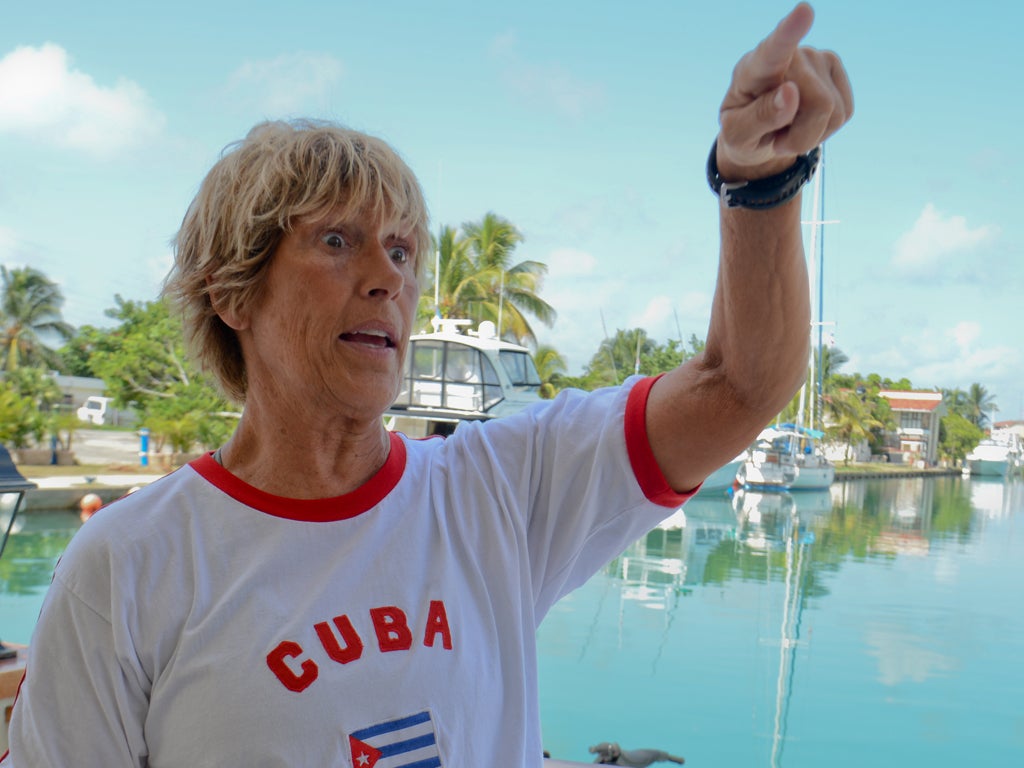62-year-old Diana Nyad ends Cuba-to-Florida swim bid

Your support helps us to tell the story
From reproductive rights to climate change to Big Tech, The Independent is on the ground when the story is developing. Whether it's investigating the financials of Elon Musk's pro-Trump PAC or producing our latest documentary, 'The A Word', which shines a light on the American women fighting for reproductive rights, we know how important it is to parse out the facts from the messaging.
At such a critical moment in US history, we need reporters on the ground. Your donation allows us to keep sending journalists to speak to both sides of the story.
The Independent is trusted by Americans across the entire political spectrum. And unlike many other quality news outlets, we choose not to lock Americans out of our reporting and analysis with paywalls. We believe quality journalism should be available to everyone, paid for by those who can afford it.
Your support makes all the difference.Diana Nyad ended her fourth attempt in nearly 35 years to swim across the Straits of Florida today, her dream of setting a record thwarted by storms, jellyfish stings, shark threats, hypothermia and swollen lips.
The swimmer was pulled from the water at 12:55 am, her crew reported, as a thunderstorm raged and winds and waves tossed support boats. Her team had previously tweeted that she came out of the water at 7:42 am, and offered no explanation for the change.
In a blog posting, crew member Candace Hogan wrote that Nyad angrily shook her head after being pulled from the water and planned to return to finish the swim after the storms subsided.
"When can I get back in?" Hogan quoted the swimmer as saying. "I want full transparency that I was out. But I have plenty left in me and I want to go on."
Nyad, who turns 63 on Wednesday, was making her third attempt since last summer to become the first person to cross the Florida Straits without a shark cage. She also made a failed try with a cage in 1978.
She started this effort Saturday in Havana and lasted longer, and made it further, than in her previous tries, her team said. She swam this time for more than 41 hours.
"She realized that the obstacles against this swim were too great and agreed at dawn to return to Key West by boat," Hogan said.
Another team member, Vanessa Linsley, told The Associated Press the swimmer encountered a triple threat of obstacles.
"Instead of getting hit with one doozy they got hit with three," Linsley said, "They got hit with the weather, they got hit with the jellyfish and they got hit with the sharks all at the same time."
Nyad was stung nine times by box jellyfish on Monday night alone, the team blog reported.
Overnight was the second straight night of storms encountered by the swimmer. Yesterday evening, the swimmer's crew was improvising ways to prevent hypothermia and to fend off further swelling of her lips and tongue. Though she's swimming in 85-degree Fahrenheit (29.5-Celsius) waters, because that is lower than the body's core temperature, it will reduce her body temperature over time. Her team said she had been shivering.
"We all know her mind can handle it," Candace Hogan, a crew member traveling with Nyad, wrote on the swimmer's blog. "But there will always be a point where a human body can't go any farther. What no one knows is where that line is drawn in Diana Nyad."
Australian Susie Maroney successfully swam the Straits in 1997, but she used a shark cage. In June, another Australian, Penny Palfrey, made it 79 miles (127 kilometers) toward Florida without a cage before strong currents forced her to abandon the attempt.
Nyad has been training for three years for the feat. She is accompanied by a support team in boats, and a kayak-borne apparatus shadowing Nyad helps keep sharks at bay by generating a faint electric field that is not noticeable to humans. A team of handlers is always on alert to dive in and distract any sharks that make it through.
She takes periodic short breaks to rest, hydrate and eat high-energy foods such as peanut butter.
AP
Join our commenting forum
Join thought-provoking conversations, follow other Independent readers and see their replies
Comments